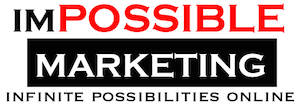Top Tips For Social Media Marketing Success In Healthcare
Posted on: May 9, 2025

Healthcare providers in Singapore face intensifying competition as patients navigate a growing array of options – from public hospitals and private clinics to telehealth services. With choice comes the need for differentiation, making digital and social media marketing indispensable for healthcare organisations. Beyond mere promotion, these platforms empower providers to educate, build trust, and foster meaningful connections with patients. However, navigating the sector’s unique challenges – including stringent regulations, privacy concerns, and the spread of misinformation – demands a strategic, compliance-conscious approach.
Navigating regulatory complexities
Healthcare marketing in Singapore is governed by strict guidelines from the Health Sciences Authority (HSA) and the Ministry of Health (MOH), which regulate the promotion of medical services, pharmaceuticals, and health products. Additionally, the PHMC marketing guidelines for the medical industry in Singapore outline specific rules that healthcare providers must follow to ensure ethical and transparent advertising. Platforms like Google and Facebook further enforce restrictions on content related to treatments, supplements, and wellness programmes.
Balancing compliance with creativity is critical; providers must craft campaigns that resonate with audiences while adhering to legal and ethical standards. Understanding these regulations helps healthcare brands build trust with consumers while avoiding potential penalties.
Why digital marketing matters in healthcare
1. Establishing trust and credibility
Trust is the cornerstone of healthcare decisions. Patients seek reassurance through transparent communication, expert insights, and authentic patient testimonials. A robust digital presence – featuring evidence-based content, clinician-authored articles, and success stories – positions providers as reliable authorities, fostering long-term patient loyalty.
2. Adapting to evolving consumer behaviour
Modern patients are proactive researchers and regularly turn to online sources for health information. Thus, healthcare providers without a strong digital footprint risk losing visibility to competitors. By optimising SEO, sharing educational content, and maintaining an active social presence, healthcare organisations can meet patients where they are – online.
3. Enabling crisis communication
During public health emergencies, social media becomes a vital channel for disseminating timely updates, clarifying guidelines, and countering panic. Platforms like Facebook and Instagram allow providers to share verified information swiftly, reinforcing their role as trusted community resources.
4. Combating misinformation
The internet’s democratisation of information has amplified health myths and unverified claims. Healthcare providers can leverage social media to debunk falsehoods, share data-driven insights, and promote public health literacy – a responsibility underscored during events like the COVID-19 pandemic.
Best practices for effective social media engagement
1. Leverage social listening
Monitoring online conversations is crucial to identify emerging health trends, patient concerns, and misinformation. By employing social listening tools like Hootsuite, healthcare marketers can track public health trends, identify emerging patient concerns, and spot gaps in the market. This real-time data enables the creation of targeted content that resonates with specific audience needs. Moreover, by keeping an eye on trending topics and hashtags, providers can quickly address and correct any circulating misinformation.
2. Prioritise value-driven content
Every post should educate, inspire, or engage. Blend actionable health tips (e.g., “5 Signs of Vitamin D Deficiency”) with relatable storytelling, such as patient recovery journeys or staff spotlights. Interactive content like quizzes (“Test Your Diabetes Knowledge”) or lighthearted memes can humanise your brand while maintaining professionalism.
3. Harness visual storytelling with infographics
Visual storytelling is a powerful tool in the digital age. Infographics, in particular, are invaluable for translating complex medical information into easily digestible and visually appealing formats. Whether you’re summarising a new study or highlighting a key health statistic, well-designed visuals can capture attention and improve content retention. Collaborating with creative teams to develop a library of branded templates can streamline this process and ensure consistency.
4. Optimise hashtag strategies
Extend the reach of your content and make it more discoverable with targeted hashtags. Blend branded tags (e.g., (such as #YourClinicNameCares) with awareness campaigns (#MentalHealthAwareness) or trending topics (#HealthyAgeing). Additionally, capitalise on hashtag holidays and awareness days (e.g., World Diabetes Day) to join global conversations and enhance visibility.
5. Leverage influencer marketing
Influencer marketing is a powerful tool for engaging audiences, especially in the healthcare space. Partnering with credible influencers – particularly those with verified medical expertise – can amplify your message and enhance your brand’s trustworthiness. These influencers have already built a loyal following, making their endorsements more impactful than traditional advertisements.
However, it is crucial to vet influencers thoroughly to ensure they provide genuine, evidence-based advice rather than purely commercial endorsements. A well-chosen influencer can simplify complex health information, making it more accessible to the general public while fostering both trust and engagement. Partnering with an agency can help you identify the right influencers, develop compelling content, and execute a data-driven strategy to maximise your campaign’s effectiveness. By leveraging influencer marketing strategically, you can bridge the gap between expert insights and everyday consumers, ensuring your message resonates effectively.
6. Focus on platform-specific engagement
Prioritise platforms where your audience is most active. LinkedIn suits B2B outreach and thought leadership, while Instagram and TikTok appeal to younger demographics with video content. Telemedicine providers might leverage YouTube for educational webinars, whereas Facebook remains ideal for community-building among older adults.
Conclusion
Social media is not optional – it’s a strategic imperative. However, finding success requires combining compliance awareness with creativity to effectively build trust and empower patients with accurate information. The final piece to this puzzle lies in listening to your audience and adapting to the ever-evolving digital landscape. All in all, embrace the strategies above to not only engage patients but also strengthen your brand’s role as a pillar of public health in the digital age.


